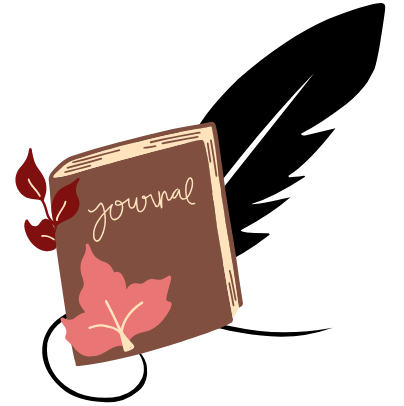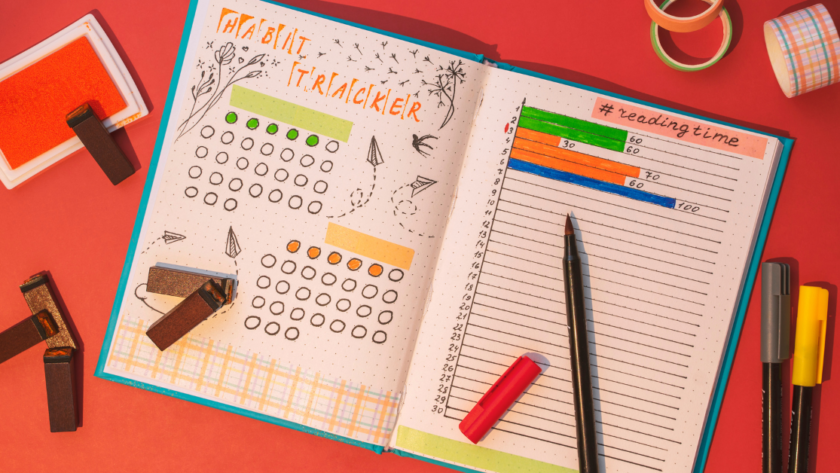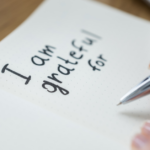I still remember the first time I saw a beautifully crafted bullet journal spread on Instagram. The clean lines, perfectly lettered headers, and intricate organizational system seemed to promise a life of efficient productivity and boundless creativity.
This system molds to your life, not the other way around.
While those Instagram-worthy spreads might appear daunting at first glance, the essence of bullet journaling is far more forgiving. It’s about finding what works for you, whether that’s a minimalist approach with simple lists or an artistic expression of your daily life.
The key is to start somewhere, and that’s where bullet journal starter kits come in handy.
These curated collections of supplies are designed to give beginners everything they need to set off on their bullet journaling adventure without feeling overwhelmed by the sheer number of options available. Let’s explore what makes a great starter kit and examine some of the best options on the market.
The Anatomy of a Bullet Journal Starter Kit
A well-designed bullet journal starter kit provides the essentials for setting up and maintaining your journal. Typically, you’ll find the following components:
- A dotted notebook
- A selection of pens or markers
- A ruler or stencil for creating layouts
- Optional extras like washi tape or stickers for decoration
The quality of these components can significantly impact your bullet journaling experience. Let’s break down each element:
The Notebook: Your Canvas
The notebook serves as the foundation of your bullet journal. When selecting a starter kit, look for one that includes a notebook with dotted pages.
These provide guidance for writing and drawing without the rigidity of lined paper, allowing for more creative freedom.
Paper quality is crucial. Opt for thick paper that prevents bleeding or ghosting (when ink shows through on the other side of the page).
This confirms you can use both sides of each page without compromising the look of your spreads.
Pens and Markers: Your Tools
A good starter kit includes at least one fine-liner pen for writing and perhaps a few colored markers or brush pens for headers and decoration. The ideal pens write smoothly and dry quickly to prevent smudging.
This allows you to work efficiently and maintain clean, crisp lines in your journal.
Rulers and Stencils: Your Guides
Straight lines and consistent shapes elevate the look of your spreads. A ruler is essential for creating clean layouts, and many kits include stencils for common bullet journal elements like calendars or habit trackers.
These tools help you achieve a polished look, even if you’re not naturally artistic.
Decorative Elements: Your Personal Touch
While not strictly necessary, items like washi tape and stickers help you personalize your journal and make the process more enjoyable. These elements allow you to add color, texture, and visual interest to your pages without requiring advanced artistic skills.
Top Bullet Journal Starter Kits for Beginners
Now that we understand what to look for in a starter kit, let’s explore some of the best options available:
1. Scribbles That Matter Starter Kit
The Scribbles That Matter Starter Kit has earned a reputation as a favorite among beginners for it’s high-quality paper and comprehensive set of tools. The A5 dotted notebook resists bleeding and ghosting, making it ideal for experimenting with different pens and techniques.
What’s included:
- A5 dotted notebook with 160 gsm paper
- Set of fine-liner pens in various colors
- Ruler/stencil combo
- Page markers
- Pen test page
The included fine-liner pens and ruler/stencil combo provide everything you need to create basic layouts. The pen test page allows you to try out different writing tools without worrying about ruining your actual spreads.
2. Leuchtturm1917 Bullet Journal Edition
Designed in collaboration with Ryder Carroll, the creator of the Bullet Journal method, this kit offers a purist approach to bullet journaling. The pre-printed index, key, and future log pages help beginners understand the core components of the system.
What’s included:
- A5 dotted notebook with 80 gsm paper
- Pre-printed index, key, and future log pages
- Two ribbon bookmarks
- Elastic closure
- Expandable pocket
While it doesn’t include extra supplies, the quality of the notebook makes it a solid foundation for your journaling journey. The pre-printed pages serve as a helpful guide for those new to the bullet journal system.
3. Archer and Olive Starter Kit
For those who want to dive into the more artistic side of bullet journaling, Archer and Olive’s kit is an excellent choice. The 160 GSM paper can handle watercolors and brush pens without a hitch, opening up a world of creative possibilities.
What’s included:
- A5 dotted notebook with 160 gsm paper
- Set of fine-liner pens
- Brush pen
- Washi tape
- Sticker sheets
The included washi tape and stickers encourage creativity from day one, allowing you to add decorative elements to your spreads without feeling intimidated by complex designs.
4. Rhodia Goalbook Bullet Journal
Rhodia’s offering stands out for it’s smooth, fountain pen-friendly paper. The included goal-planning pages make this an excellent choice for those using their bullet journal primarily for productivity and self-improvement.
What’s included:
- A5 dotted notebook with 90 gsm paper
- Goal-planning pages
- Two ribbon bookmarks
- Elastic closure
- Expandable pocket
The Rhodia Goalbook combines the flexibility of a traditional bullet journal with the structure of a goal-oriented planner, making it ideal for those who want to focus on personal development.
5. Minimalist Bullet Journal Kit by Miliko
If the idea of elaborate spreads feels overwhelming, Miliko’s minimalist kit might be the perfect fit. With just a notebook, pens, and a ruler, it encourages users to focus on the essentials of the bullet journal system without the distraction of decorative elements.
What’s included:
- A5 dotted notebook with 100 gsm paper
- Set of fine-liner pens
- Ruler
This kit is perfect for those who prefer a clean, simple approach to bullet journaling or for anyone who wants to start with the basics before exploring more complex layouts.
Getting Started: Your First Pages
Once you’ve chosen your starter kit, it’s time to set up your bullet journal. Here’s a step-by-step guide to creating your essential pages:
1. Index
Start by numbering your pages. Then, create an index at the front of your journal to keep track of your content.
As you add new spreads or collections, note their page numbers in the index for easy reference.
2. Key
Design a simple key for your signifiers (symbols used to categorize your entries). Common signifiers include:
- • for tasks
- ○ for events
- for notes
- for important items
- → for migrated tasks
Feel free to create your own signifiers that make sense for your needs.
3. Future Log
Set up a yearly overview to note important dates and long-term goals. This can be as simple as a list of months with space for notes or a more elaborate calendar-style spread.
4. Monthly Spread
Create a layout for the current month, including a calendar and task list. This gives you an overview of your month at a glance and helps you plan ahead.
5. Daily Log
Start your first daily log, using rapid logging to jot down tasks, events, and notes. This is where the bullet journal system really shines, allowing you to capture information quickly and efficiently.
Remember, these are just guidelines. As you become more comfortable with the system, you’ll naturally adapt it to suit your needs. The beauty of bullet journaling comes from it’s flexibility, so don’t be afraid to experiment and find what works best for you.
Common Pitfalls and How to Avoid Them
As you begin your bullet journaling journey, you might encounter some common challenges. Here’s how to navigate them:
Perfectionism
Many new bullet journalists feel pressure to create picture-perfect spreads like those seen on social media. Remember that your bullet journal serves as a tool for organization and self-reflection, not as a showcase for artistic talent.
Focus on functionality first, and let aesthetics develop naturally over time.
How to avoid it: Start simple. Use basic layouts and gradually incorporate more complex designs as you become comfortable with the system.
Embrace imperfections as part of your personal style.
Overcomplication
It’s easy to get carried away with elaborate spreads and trackers, especially when you’re excited about your new hobby. However, creating overly complex layouts can be time-consuming and may discourage you from using your journal consistently.
How to avoid it: Begin with the core elements of the bullet journal system (index, future log, monthly and daily logs). Add new elements gradually, ensuring each addition serves a purpose in your life.
Inconsistency
Bullet journaling works best when it becomes a regular habit. Sporadic use can lead to missed tasks and a cluttered mind – the opposite of what the system intends to achieve.
How to avoid it: Set a regular time to update your journal, even if it’s just for a few minutes each day. Make it part of your morning or evening routine to ensure consistency.
Comparison
Social media platforms showcase stunning bullet journal spreads that can make your own efforts seem inadequate. This comparison can lead to discouragement and may even cause you to abandon your journaling practice.
How to avoid it: Remember that your journal is for you, not for Instagram. Appreciate the unique aspects of your own style and focus on how your journal helps you organize your life and thoughts.
Adapting Your Bullet Journal
As you grow more comfortable with the basics, you can start experimenting with different layouts and collections. Here are some ideas to try:
Habit Trackers
Create a grid to monitor daily habits like exercise, water intake, or meditation. This visual representation helps you stay accountable and identify patterns in your behavior.
Mood Logs
Track your emotional state over time. This can help you identify triggers for mood changes and provide valuable insights for self-improvement.
Reading Lists
Keep track of books you want to read, are now reading, and have finished. You can include ratings, quotes, or brief reviews for each book.
Project Planners
Break down large projects into manageable tasks. Use timelines or Gantt charts to visualize project progress.
Meal Planners
Plan your meals for the week or month. This can help with grocery shopping, budgeting, and maintaining a balanced diet.
Gratitude Logs
Record things you’re grateful for each day. This practice can boost your mood and overall well-being.
The key is to add elements that serve your specific needs and lifestyle. Don’t be afraid to experiment and adjust your layouts as your needs change.
From Beginner to Master
Becoming proficient in the art of bullet journaling takes time and practice. As you continue to use your journal, you’ll explore new techniques and refine your approach.
Here are some ways to deepen your practice:
Experiment with Different Artistic Techniques
Try incorporating hand lettering, calligraphy, or watercolor into your spreads. These skills can add a personal touch to your journal and make the process more enjoyable.
Explore Digital Bullet Journaling
Consider using digital bullet journaling apps to complement your physical journal. This can be especially useful for on-the-go planning or for creating backup copies of your spreads.
Join Online Communities
Participate in bullet journaling forums, Facebook groups, or Instagram communities. These platforms provide inspiration, tips, and support from fellow enthusiasts.
Attend Workshops or Webinars
Look for local or online workshops that focus on advanced bullet journaling techniques. These can help you learn new skills and connect with other journalers.
Develop Your Own Layouts
As you become more comfortable with the system, start creating custom layouts that cater to your specific needs. This might include specialized trackers, unique weekly spreads, or personalized collections.
Practice Makes Progress
To reinforce your learning and develop your bullet journaling skills, try these exercises:
- Create a weekly spread using only the items in your starter kit.
This will help you master the basics before adding more complex elements.
- Design a collection page for a personal goal or interest.
This could be anything from a fitness tracker to a list of movies you want to watch.
- Experiment with different ways of rapid logging to find what works best for you.
Try using different symbols, colors, or layouts for your daily logs.
- Challenge yourself to a 30-day journaling streak.
Commit to updating your bullet journal every day for a month to build a strong habit.
Remember, the most important aspect of bullet journaling is consistency. Your journal serves as a tool for growth and self-reflection, so make it a part of your daily routine.
With time and practice, you’ll develop a system that perfectly suits your needs and enhances your productivity and creativity.
Key Takeaways
- Choose a starter kit that matches your goals and aesthetic preferences
- Focus on functionality over perfection when setting up your journal
- Start with the basic elements (index, key, future log, monthly and daily spreads) and build from there
- Experiment with different layouts and collections to personalize your system
- Use your bullet journal consistently to build a habit and see real benefits
People Also Asked
What is a bullet journal?
A bullet journal is a customizable and flexible planning system that combines elements of a planner, diary, and to-do list. It uses a dotted notebook and a series of symbols to organize tasks, events, and notes.
How do I start a bullet journal?
To start a bullet journal, you’ll need a dotted notebook and a pen. Begin by creating an index, key, future log, and monthly spread.
Then, start your daily logs using rapid logging techniques.
What supplies do I need for bullet journaling?
Essential supplies include a dotted notebook, fine-liner pens, and a ruler. Optional items include colored markers, washi tape, and stickers for decoration.
Is bullet journaling time-consuming?
Bullet journaling can be as simple or elaborate as you choose. Basic layouts can be set up quickly, while more artistic spreads may take more time.
The key is to find a balance that works for you.
Can I use a regular notebook for bullet journaling?
While you can use any notebook for bullet journaling, dotted notebooks are preferred as they provide guidance without the rigidity of lined paper.
How often should I update my bullet journal?
For best results, update your bullet journal daily. However, even weekly updates can be useful if that fits better with your schedule.
What’s the difference between a bullet journal and a planner?
A bullet journal is fully customizable, allowing you to create layouts that suit your needs. A planner typically has pre-printed layouts that may not be as flexible.
Can bullet journaling help with anxiety?
Many people find that bullet journaling helps reduce anxiety by providing a structured way to organize thoughts and tasks. It can also serve as a mindfulness practice.
How do I make my bullet journal look pretty?
You can enhance the appearance of your bullet journal by using colored pens, adding washi tape, incorporating doodles, or experimenting with hand lettering. However, remember that functionality is more important than aesthetics.
What are some popular bullet journal collections?
Popular collections include habit trackers, mood logs, reading lists, goal trackers, and gratitude logs. The best collections are those that align with your personal interests and goals.




